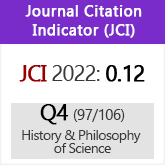Study of the crossing from Cartagena de Indias to Cuba by the American Atlas hydrographic expedition (1803-1805)
DOI:
https://doi.org/10.3989/asclepio.1991.v43.2.541Abstract
From the beginning of the Bourbon reforms the absence of a scientific cartography of the Caribbean was one of the major problems for Spanish strategy in the area. In times of peace, the lack of maps and plans increased the dangers of navigation and limited trade; in wartime it limited the effectiveness of naval movements and exposed squadrons to unnecessary dangers. With the culmination of the Bourbon reforms in America (1787-1792), the Spanish crown tackled the problem decisively by organizing the American Atlas hydrographie expedition. From 1792 to 1795, its first division mapped the Windward and Leeward Islands of the Greater Antilles, while the second division worked on the mainland. Established in Cartagena de Indias in 1794, its return orders were postponed due to the need to study the route to Habana —the key to military supply and commercial development in the Spanish Caribbean. In three consecutive hydrographie campaigns (1803-1805), the members of the second division of brigs fixed astronomical positions and prepared maps of the obstacles to navigation; from that time it became possible to avoid the dangers on this important route.
Downloads
Download data is not yet available.
Downloads
Published
1991-12-30
How to Cite
Lucena Giraldo, M. (1991). Study of the crossing from Cartagena de Indias to Cuba by the American Atlas hydrographic expedition (1803-1805). Asclepio, 43(2), 199–215. https://doi.org/10.3989/asclepio.1991.v43.2.541
Issue
Section
Studies
License
Copyright (c) 2020 Consejo Superior de Investigaciones Científicas (CSIC)

This work is licensed under a Creative Commons Attribution 4.0 International License.
© CSIC. Manuscripts published in both the printed and online versions of this Journal are the property of Consejo Superior de Investigaciones Científicas, and quoting this source is a requirement for any partial or full reproduction.All contents of this electronic edition, except where otherwise noted, are distributed under a “Creative Commons Attribution 4.0 International” (CC BY 4.0) License. You may read here the basic information and the legal text of the license. The indication of the CC BY 4.0 License must be expressly stated in this way when necessary.
Self-archiving in repositories, personal webpages or similar, of any version other than the published by the Editor, is not allowed.














